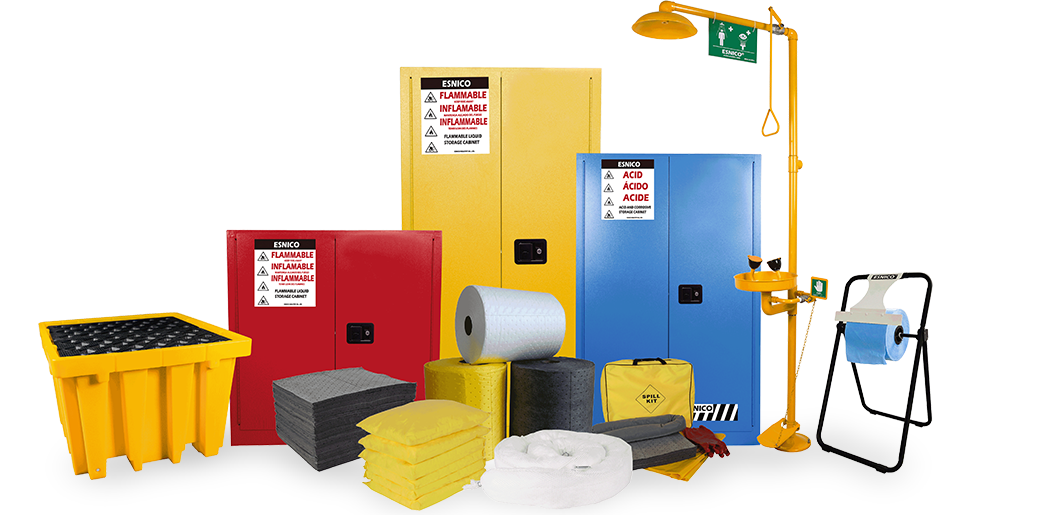Eyewash stations are crucial safety devices in workplaces where employees may come into contact with various hazardous substances. These stations are specifically designed to provide immediate relief and first aid to individuals who have been exposed to substances that can harm the eyes. To fully comprehend the importance of eyewash stations, it's essential to understand the types of substances that necessitate their presence and utilization in various occupational settings. This article will delve into the different categories of substances that require the use of eyewash stations, emphasizing the significance of eye safety in the workplace.
I. Chemical Substances:
Acids: Acids, such as sulfuric acid and hydrochloric acid, are commonly used in industrial processes and laboratories. Accidental exposure to acids can lead to severe eye injuries, and immediate flushing with water is essential to mitigate damage.
Alkalis: Alkalis, including sodium hydroxide and potassium hydroxide, are highly caustic and can cause serious eye injuries. An eyewash station is crucial to neutralize the effects of alkali exposure by rinsing the eyes thoroughly.
Irritants: Various chemical irritants, like ammonia and chlorine, can lead to eye discomfort, redness, and even chemical burns. Quick eye irrigation is vital to alleviate symptoms and prevent further damage.
II. Particulate Substances:
Dust and Debris:
In industrial settings, dust, wood chips, metal shavings, or other airborne particulate matter can inadvertently enter the eyes, causing irritation and discomfort. Eyewash stations are essential for removing these particles effectively.
Foreign Bodies:
Small foreign objects, such as metal slivers, wood splinters, or debris, can become embedded in the eye. Eyewash stations help rinse out these foreign bodies and minimize injury.
III. Biological Agents:
Infectious Materials: Healthcare and laboratory workers frequently encounter biological substances that may contain infectious agents. Eyewash stations are vital for protecting against accidental exposure to blood, bodily fluids, or other potentially infectious materials.
Microorganisms: In research laboratories, exposure to microorganisms, such as bacteria and viruses, can occur. Eyewash stations are crucial for reducing the risk of infection by providing a rapid response to potential eye contact with these agents.
IV. Allergens:
Allergens: Allergens like pollen, pet dander, and certain chemicals can trigger allergic reactions in some individuals when they come into contact with the eyes. Eyewash stations help flush out allergens to alleviate discomfort.
V. Thermal Agents:
Heat: Exposure to extreme heat, such as hot steam or molten materials, can lead to burns in the eye. Immediate cooling and rinsing through an eyewash station are necessary to minimize tissue damage.
Cold: In cold storage facilities, exposure to extremely cold temperatures can cause frostbite or other cold-related eye injuries. Eyewash stations can provide relief and prevent further harm in such situations.
VI. Irritants and Sensitizers:
Chemical Sensitizers: Some chemicals can sensitize the eyes over time, making them more susceptible to irritation upon re-exposure. Eyewash stations are essential for promptly rinsing the eyes when sensitization occurs.
Ocular Irritants: Various workplace activities, such as welding, can produce airborne irritants that may lead to eye irritation. Eyewash stations help alleviate discomfort and prevent long-term eye damage.
VII. Ocular Trauma:
Mechanical Trauma: Workplaces that involve machinery, tools, or equipment pose a risk of mechanical eye injuries due to flying objects or accidental impacts. Eyewash stations are indispensable for mitigating these injuries.
Penetrating Injuries: In certain occupations, such as construction or manufacturing, the risk of penetrating eye injuries from tools or materials exists. Eyewash stations play a vital role in minimizing infection risks and providing immediate care.
VIII. Radiological Hazards:
Ionizing Radiation: Workers in industries involving ionizing radiation, like nuclear facilities or radiology, may face eye exposure to harmful radiation. Eyewash stations can assist in removing radioactive particles and reducing the risk of radiation-induced eye injuries.
IX. Caustic and Corrosive Substances:
Corrosive Liquids: Substances like concentrated acids or bases can cause severe corrosion to the eye's tissues. Eyewash stations are indispensable for diluting and neutralizing the effects of these substances.
Caustic Gases: Gaseous substances, like chlorine or ammonia, are highly corrosive and can harm the eyes upon exposure. Eyewash stations help in rinsing away these gases, reducing injury severity.
Eyewash stations are indispensable safety features in workplaces where employees encounter various hazardous substances and face the risk of eye injuries. Understanding the types of substances that require the use of eyewash stations is crucial for ensuring employee safety and compliance with regulatory requirements. From chemicals and particulate matter to biological agents and thermal hazards, eyewash stations play a pivotal role in providing immediate first aid and reducing the severity of eye injuries. Employers and employees must be aware of the potential risks in their work environments and the importance of proper eyewash station usage, maintenance, and accessibility to safeguard eye health in the workplace.














